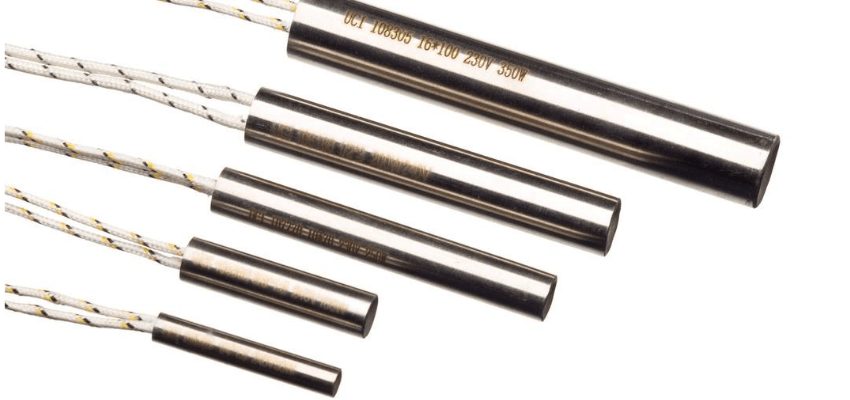Think of heat as the soul of any heating element. In cartridge heaters, the magic happens in the details, specifically in how the wires are spaced. Close wire spacing is not just a technical choice; it’s a calculated strategy that enhances performance, reliability, and efficiency. This design feature plays a significant role in ensuring consistent and effective heat distribution for a variety of industrial applications.
Heat Distribution Efficiency with Compact Wire Alignment
When wires are placed closer together in cartridge heaters, heat is distributed more evenly across the element. This design ensures that every part of the heater contributes to the heating process, minimizing uneven temperature zones.
With compact wire alignment, heat is not just concentrated in a single area; it flows consistently throughout the heater. This uniformity is particularly beneficial for applications requiring precise temperature control, such as plastic molding or food processing. It ensures that the heating element performs as expected, without the risk of overheating specific sections.
Compact wire spacing also reduces energy waste. By evenly spreading heat, the element works more efficiently, consuming less power to reach and maintain desired temperatures. This not only benefits operations but also extends the heater’s lifespan by avoiding strain from uneven heat buildup.
Thermal Conductivity Enhanced by Precise Spacing
Thermal conductivity is the lifeline of any heating element. In cartridge heaters, precise wire spacing enhances this property, allowing for seamless heat transfer from the wire to the sheath and beyond.
Close wire spacing minimizes gaps that can disrupt the flow of heat. With minimal gaps, the heating wire maintains continuous contact with the surrounding insulation and sheath, enabling better conductivity. This ensures the heat generated within the element is effectively transferred to the target material or surface.
For industries relying on consistent and rapid heating, enhanced thermal conductivity translates to quicker results and improved process efficiency. It’s the hidden advantage of a well-designed heater, ensuring every watt of energy is put to good use.
Prevention of Hot Spots Through Uniform Wire Placement
Hot spots are the enemy of long-term performance in cartridge heaters. They occur when certain sections of the heating element become significantly hotter than others, often leading to premature failure. Close wire spacing prevents this issue by promoting uniform temperature distribution.
When wires are evenly spaced, the heat generated is balanced throughout the heater, reducing the risk of localized overheating. This design feature not only improves reliability but also reduces the chance of damage to sensitive materials or equipment that may come into contact with the heater.
By eliminating hot spots, cartridge heaters can operate for extended periods without risk of failure. This reliability is invaluable for industries where downtime can result in costly delays or compromised quality.
Energy Transfer Maximized by Optimized Wire Positioning
Energy transfer in cartridge heaters depends on the seamless flow of heat from the wires to the application surface. Optimized wire positioning ensures that the energy generated by the heater is fully utilized, minimizing losses and maximizing output.
When wires are positioned closer together, the heat generated is concentrated and evenly spread across the heater. This precision reduces the amount of energy needed to maintain consistent temperatures, making the heater more efficient overall.
For manufacturers, this translates to cost savings on energy consumption. Optimized wire positioning also contributes to faster heating cycles, allowing processes to be completed more quickly without sacrificing performance or quality.
Improved Durability Through Reduced Thermal Stress
Thermal stress can significantly impact the longevity of cartridge heaters. Uneven heat distribution causes expansion and contraction at different rates, putting unnecessary strain on the heater’s components. Close wire spacing addresses this issue by reducing thermal stress.
With heat distributed evenly, the materials within the heater experience uniform expansion and contraction. This consistency minimizes the risk of cracks, warping, or other forms of wear and tear that can shorten the heater’s lifespan.
Durability is a key factor for industrial applications where heaters are subjected to continuous operation. By reducing thermal stress, close wire spacing ensures that cartridge heaters remain reliable and perform optimally, even in demanding environments.
Faster Heating Response from Close Wire Configuration
Time is a critical factor in many industrial processes. The faster a heater can reach the desired temperature, the more efficient the operation becomes. Close wire configuration in cartridge heaters provides a faster heating response by creating a more concentrated and direct heat flow.
With minimal gaps between wires, the heat generated spreads quickly throughout the heater, reducing the time it takes to reach operational temperatures. This quick response is especially beneficial for applications requiring rapid heating cycles, such as packaging, sealing, or injection molding.
Faster heating not only boosts productivity but also reduces energy consumption by minimizing the time spent powering the heater. It’s a win-win for manufacturers looking to improve efficiency without compromising quality.

